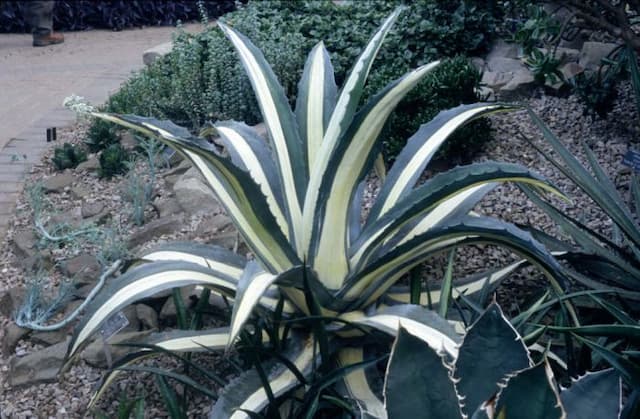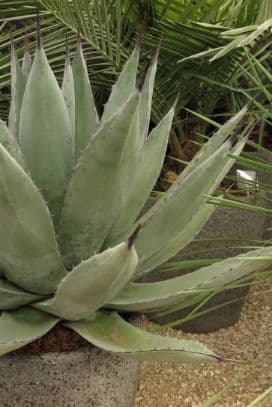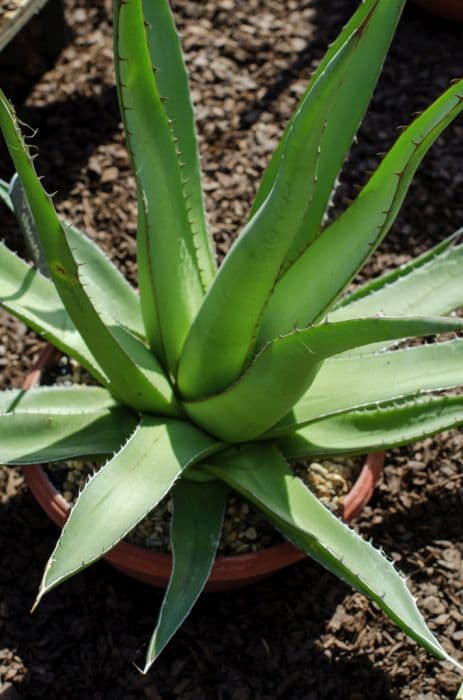Hooker's Solomon's Seal Polygonatum hookeri

ABOUT
Polygonatum hookeri, commonly known as Hooker's Solomon's seal, is a perennial plant characterized by its arching stems and graceful foliage. The leaves are arranged alternately along the stems, often with a slight overlap. They are typically a lush, deep green, with a smooth texture and an elongated oval shape, sometimes coming to a point. The blossoms of Hooker's Solomon's seal are small, tubular flowers that dangle from the leaf axils beneath the arching stems. The flowers are usually a subtle shade of creamy white or pale green, often exhibiting a slight flare at the tip. These bell-shaped blooms have a delicate and modest allure. After the flowering season, the flowers often give way to berries. The berries typically start out green and ripen to a dark, almost black color, providing a striking contrast against the green foliage. The fruit of the Hooker's Solomon's seal can add visual interest to the plant as the growing season progresses. Overall, Hooker's Solomon's seal has a refined appearance, with its combination of understated flowers and berries beneath the verdant foliage, making it a charming addition to shade gardens and woodland plantings. Its aesthetic is defined more by its gentle arches and the pendulous nature of its floral display rather than its overall size.
About this plant
 Names
NamesSynonyms
Hooker's Solomon’s Seal, Dwarf Solomon's Seal, Rock Solomon's Seal.
Common names
Convallaria hookeri.
 Toxicity
ToxicityTo humans
Polygonatum hookeri, commonly known as Solomon's seal, is generally considered non-toxic to humans. However, it is essential to mention that eating large quantities of any plant can potentially cause digestive upset or allergic reactions in some individuals. There isn't extensive documentation specifically on the toxicity of Solomon's seal to humans, but care should be taken when handling plants unfamiliar to you, and they should not be eaten unless they are known to be safe and are prepared correctly.
To pets
For pets, Solomon's seal is also not typically considered highly toxic, but as with humans, ingesting plant material can possibly lead to gastrointestinal upset such as vomiting or diarrhea. It is usually recommended to prevent pets from consuming plants that are not part of their typical diet, as different animals can have varying sensitivities to plant compounds. If your pet has ingested any part of the Solomon's seal plant and is showing adverse symptoms, it is advisable to contact a veterinarian.
 Characteristics
CharacteristicsLife cycle
Perennials
Foliage type
Deciduous
Color of leaves
Green
Flower color
Greenish-white
Height
4 inches (10 cm)
Spread
6 inches (15 cm)
Plant type
Herb
Hardiness zones
5
Native area
Himalayas
Benefits
 General Benefits
General Benefits- Ornamental value: Polygonatum hookeri, commonly known as Hooker's Solomon's seal, adds aesthetic appeal to gardens with its delicate flowers and attractive foliage.
- Shade tolerance: This plant is well-suited for shaded gardens where other plants may struggle to grow.
- Drought resistance: Once established, Hooker's Solomon's seal can tolerate periods of drought with minimal watering.
- Wildlife support: The flowers of the plant provide nectar for bees and other pollinators, supporting biodiversity.
- Low maintenance: Hooker's Solomon's seal is relatively easy to care for, requiring little maintenance beyond occasional watering and pruning.
 Medical Properties
Medical Properties- Anti-inflammatory: The root extracts of Polygonatum hookeri may possess anti-inflammatory properties that can help in reducing inflammation in the body.
- Antioxidant: It might contain compounds with antioxidant effects that can help in protecting the body against oxidative stress.
- Immunomodulatory: Some studies suggest that the polysaccharides from Polygonatum hookeri could have effects on the immune system, potentially enhancing its function.
 Air-purifying Qualities
Air-purifying QualitiesThis plant is not specifically known for air purifying qualities.
 Other Uses
Other Uses- Polygonatum hookeri, commonly known as Solomon's seal, can be used in landscaping as ground cover due to its low-growing nature, which helps to suppress weeds in gardens.
- The attractive berries of Solomon's seal can be used to create natural jewelry when dried and varnished, although care should be taken because they are not edible.
- The plant's stems are sometimes used in floral arrangements to add a touch of greenery or natural woodland aesthetic.
- A powder made from the dried roots of Solomon's seal can be used as a natural starch for stiffening clothes.
- The fibers from the plant's stems can be experimented with for paper-making, offering a unique texture and appearance to the paper.
- In some cultures, Solomon's seal is incorporated into pottery glazes for a unique earthy tone.
- Photographers and artists might use Solomon's seal in their compositions for natural macro photography and botanical illustrations due to their eye-catching leaves and flowers.
- Aquarists sometimes use dried pieces of Solomon's seal in fish tanks to create a natural-looking habitat, although it's important to ensure it is safe and does not affect water quality.
- When dried, various parts of Solomon's seal can be used to create potpourri which emits a subtle, earthy fragrance when mixed with other herbs.
- Children sometimes fashion the stems into whistles or small pop-guns, engaging with nature while playing outdoors.
Interesting Facts
 Feng Shui
Feng ShuiThe Solomon's seal is not used in Feng Shui practice.
 Zodiac Sign Compitability
Zodiac Sign CompitabilityThe Solomon's seal is not used in astrology practice.
 Plant Symbolism
Plant Symbolism- Longevity and Vitality: Many species of Polygonatum, commonly known as Solomon's seal, are believed to symbolize long life and health, due to their hardiness and ability to bounce back when cut down.
- Healing and Restoration: Solomon's seal has been used in traditional medicine, which gives it a symbolic association with healing, recovery, and soothing of ailments.
- Protection: Some folklore suggests that Solomon's seal can ward off negative energies, therefore being a symbol of protection and safety.
- Wisdom and Insight: Named after the biblical King Solomon, who was known for his wisdom, some cultures may associate these plants with wisdom and the ability to make good judgments.
 Water
WaterSolomon's Seal requires even moisture, especially during the spring and summer growing seasons. It's best to water the plant once a week, providing around 1 inch of water each time to ensure the soil remains moist but not waterlogged. During the active growth period in spring and early summer, up to 2 gallons per week for outdoor plants can be appropriate, depending on weather conditions and soil type. Watering should be reduced in the fall as the plant prepares for dormancy, and in winter water sparingly, only to prevent the soil from completely drying out.
 Light
LightSolomon's Seal thrives in partial to full shade, making it suitable for woodland gardens or areas under the canopy of taller trees. The ideal spot is one where morning light might filter through but where the plant is protected from the harsh midday sun. Dappled shade is also a good lighting condition for this plant, helping to mimic its natural habitat.
 Temperature
TemperatureSolomon's Seal prefers temperate climates and fares best at temperatures between 60°F and 70°F. It can survive minimum temperatures down to around 50°F and maximum temperatures up to 75°F. However, it should be protected from extreme cold below this range and might require mulching during winter to insulate the roots.
 Pruning
PruningPruning Solomon's Seal is generally done to remove dead or yellowing foliage, which can be cut back to the ground level in late fall or early spring. Occasional removal of damaged or diseased stems throughout the growing season promotes air circulation and plant health. The best time to prune extensively is after the foliage has died back, typically in the fall after the first frost.
 Cleaning
CleaningAs needed
 Soil
SoilSolomon's Seal (Polygonatum hookeri) thrives in a well-draining, humus-rich soil mix with a slightly acidic to neutral pH of 5.5 to 7.0. A mixture of loamy garden soil, leaf mold or compost, and perlite or sand for aeration would be ideal to facilitate healthy root growth and adequate moisture retention without waterlogging.
 Repotting
RepottingSolomon's Seal should be repotted every 2 to 3 years or when it becomes root-bound. Repotting is best done in the spring just as the plant begins to grow, which provides it with refreshed soil and more space to expand.
 Humidity & Misting
Humidity & MistingSolomon's Seal prefers a relatively high humidity level, around 60% but is quite adaptable; it can tolerate average indoor humidity levels as long as the soil moisture and watering practices are adequate for its needs.
 Suitable locations
Suitable locationsIndoor
Place Solomon's Seal in bright, indirect light, maintain moist soil.
Outdoor
Plant Solomon's Seal in dappled shade, keep soil consistently moist.
Hardiness zone
4-8 USDA
 Life cycle
Life cyclePolygonatum hookeri, commonly known as Hooker's Solomon's seal, begins its life cycle as a seed, usually dispersed by animals or natural elements. Upon germination, the seed grows a root system and a shoot that emerges from the soil, developing into a recognizable young plant with lance-shaped leaves. In its vegetative stage, the plant continues to grow and develop a rhizome, which is an underground stem that allows for perennial growth. Once mature, usually in spring, the plant produces small, pendulous, bell-shaped flowers, which are typically greenish-white and may attract pollinators like bees. After pollination, these flowers develop into small, round berries that can be blue to black when ripe; these berries contain seeds that will disperse to start a new generation. As a perennial, the plant goes dormant in winter, with the above-ground foliage dying back, and regrows from the rhizome the following spring.
 Propogation
PropogationPropogation time
Spring
Solomon's Seal (Polygonatum hookeri) is often propagated by dividing its rhizomes, a method best undertaken during the dormant season, usually in the fall or early spring. To propagate by division, one should carefully dig up the plant, ensuring minimal damage to the roots and rhizomes. The rhizomes, which are horizontal underground stems, can be gently separated into smaller segments, each with at least one or two buds. These segments should then be replanted promptly at a depth of about 2 to 4 inches (5 to 10 centimeters), spaced approximately 12 inches (30 centimeters) apart in well-prepared soil rich in organic matter. This method allows for a relatively quick and reliable method of multiplying Solomon's Seal plants, resulting in new plants that are true to the parent.









